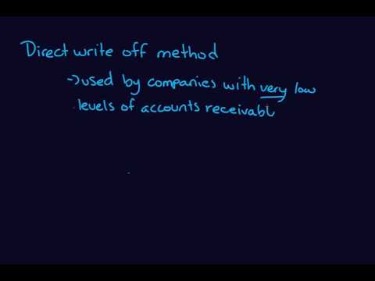How to do a step-by-step bank reconciliation

QuickBooks Desktop will automatically generate a Beginning Balance based on your last reconciliation. For accounts connected to online banking, confirm that all transactions are accurately matched and categorized. To access the reconciliation tool in QuickBooks Online, navigate to Settings and then select Reconcile. It’s important to perform a bank reconciliation periodically to identify fraudulent activities or bookkeeping and accounting errors.
When you create a new account in QuickBooks, you pick a day to start tracking transactions. You enter the balance of your real-life bank account for whatever day you choose. We recommend setting the opening balance at the beginning of a bank statement. Be careful not to reconcile transactions that are not yet cleared or present on your bank statement. Utilize the Items you’ve marked cleared section to compare the summary totals with those on your bank statement.
Add book transactions to your bank balance
When you’ve entered all the information from your bank statement, click the green Start reconciling button to continue. To correct transactions that have already been reconciled, locate the transaction in question and remove the reconciliation marker, such as a checkmark, to un-reconcile it. Then, make the necessary changes to ensure the transaction details accurately reflect the actual transaction. Adjusting entries may be necessary to correct these discrepancies, particularly in cases of bank errors or charges and fees not recorded in QuickBooks.

If you would like to streamline your reconciliation process in QuickBooks, Synder is the answer. Synder is a comprehensive financial management software that specializes in automating accounting processes for businesses, particularly those operating in ecommerce and using online payment platforms. If your beginning balance in your accounting software isn’t correct, the bank account won’t what is certified payroll reconcile.
Add bank-only transactions to your book balance
To see all of your adjustments on the list, you can review a Previous Reconciliation report for the reconciliation you adjusted. This will show you cleared transactions and any changes made after the transaction that may not what is document show in your discrepancies. To reconcile, simply compare the list of transactions on your bank statement with what’s in QuickBooks.
How To Process Bank Reconciliations in QuickBooks Online
You should perform monthly bank reconciliations so you can better manage your cash flow and understand your true cash position. Read on to learn about bank reconciliations, use cases, and common errors to look for. You will, however, want to regularly reconcile any short-term or long-term liability (loan) accounts to make sure the principal due and the interest paid are correctly accounted for in QuickBooks. The process for reconciling these accounts is the same as the process for reconciling a bank or credit card account, and it typically takes only moments to do. Reconciling your accounts is an important step in your business accounting process. Usually, reconciliation signals all the information in your books has been verified against an outside source and the books are ready to be closed for the month.
Step 2: Initiating the reconciliation process
This guide has walked you through the essential steps of the reconciliation process, from preparing your documents to troubleshooting common issues. When handling discrepancies between QuickBooks and your bank statements, start by comparing each transaction in QuickBooks against the bank statements to spot any differences. Sign up for Synder today or book a seat at a Weekly Public Demo to experience firsthand how Synder delinquent account credit card definition automates bookkeeping and accounting tasks for online transactions.
Most reconciliation modules allow you to check off outstanding checks and deposits listed on the bank statement. In this guide, we’ll show you how to complete a bank reconciliation in QuickBooks Online, which can help verify that all the activities in your bank account are recorded accurately. To successfully reconcile your transactions against your bank statement, the difference between the ending balance and cleared balance should be zero. If the difference isn’t zero, we have troubleshooting tips to help you locate the discrepancies. The information on your bank statement is the bank’s record of all transactions impacting the company’s bank account during the past month. Compare the ending balance of your accounting records to your bank statement to see if both cash balances match.
- Once these discrepancies are identified, they need to be thoroughly investigated.
- Locate “Reconciliation Reports” in the report center, and QuickBooks will take you to the History by account screen.
- This process involves checking that all income and sales are correctly entered and categorized.
- QuickBooks Online, our best small business accounting software, can help you ensure the accuracy of your bank transactions with its excellent bank reconciliation feature.
Just like balancing your checkbook, you need to review your accounts in QuickBooks to make sure they match your real-life bank and credit card statements. By regularly reconciling your accounts with your bank and credit card statements, you ensure the integrity of your financial data, enabling informed decision-making for your business. If you’ve identified any errors on the statement, contact your financial institution at once so they can investigate. You now know how to process bank reconciliation in QuickBooks Online. The next lesson in our tutorial series is on managing downloaded credit card transactions in QuickBooks Online.
